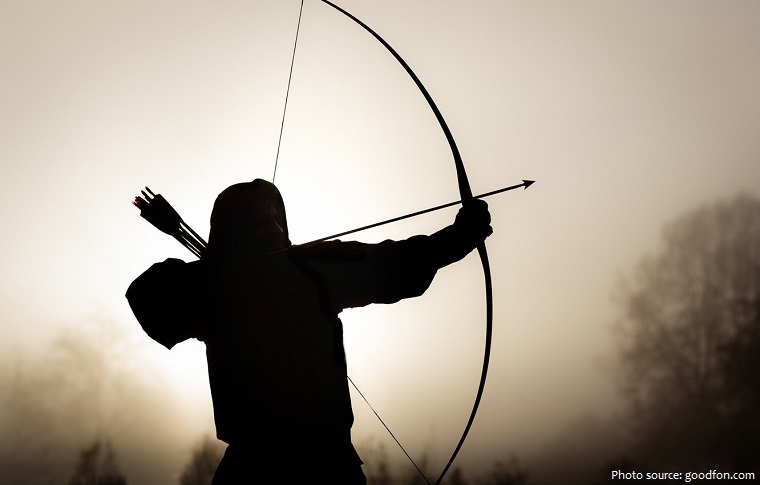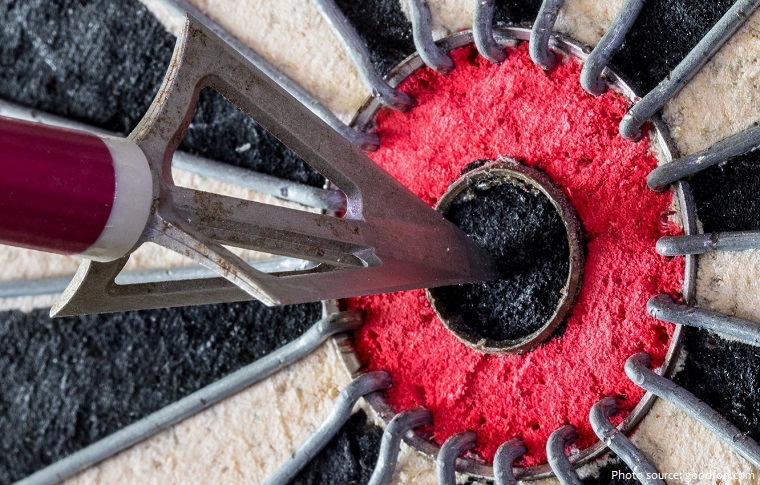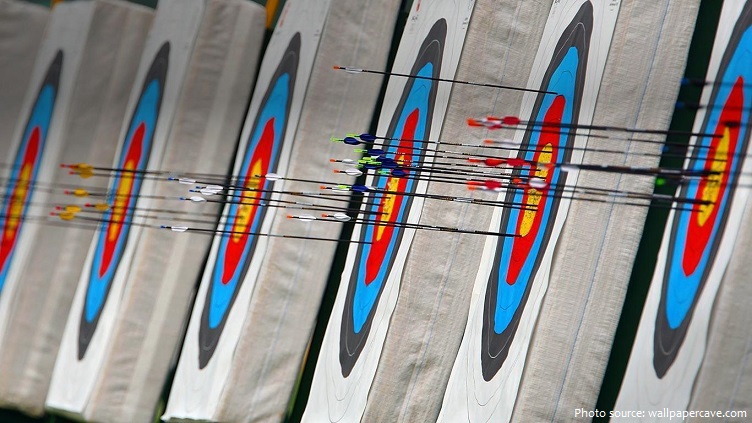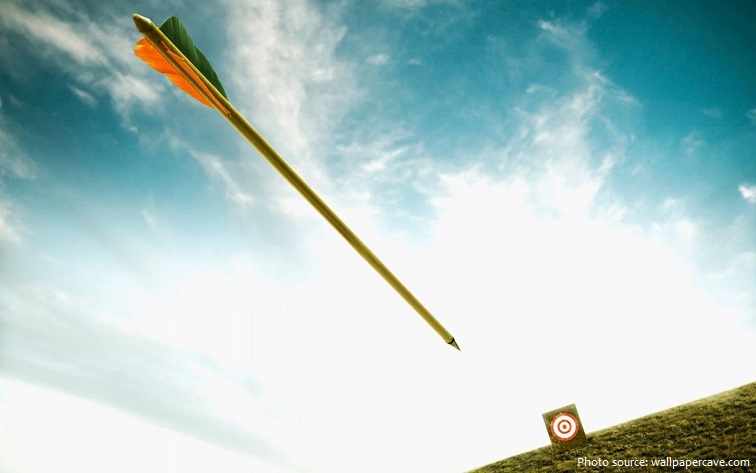
The bow and arrow is a ranged weapon system consisting of an elastic launching device (bow) and long-shafted projectiles (arrows).
The arrow, a thin wooden shaft with a feathered tail, is fitted to the string by a notch in the end of the shaft and is drawn back until sufficient tension is produced in the bow so that when released it will propel the arrow. Arrowheads have been made of shaped flint, stone, metal, and other hard materials.
Archery is the art, practice, or skill of using bows to shoot arrows. A person who shoots arrows with a bow is called a bowman or an archer. Someone who makes bows is known as a bowyer, someone who makes arrows is a fletcher, and someone who manufactures metal arrowheads is an arrowsmith.
There are 3 types of bows and arrows: a self bow, composite bow and crossbow.

A self bow or simple bow is a bow made from a single piece of wood. Extra material such as horn nocks on the ends, or built-up handles, would normally be accepted as part of a self bow. Some modern authorities would also accept a bow spliced together in the handle from two pieces of wood.
A composite bow is a traditional bow made from horn, wood, and sinew laminated together, a form of laminated bow. The horn is on the belly, facing the archer, and sinew on the outer side of a wooden core. When the bow is drawn, the sinew (stretched on the outside) and horn (compressed on the inside) store more energy than wood for the same length of bow. The strength can be made similar to that of all-wood “self” bows, with similar draw-length and therefore a similar amount of energy delivered to the arrow from a much shorter bow. However, making a composite bow requires more varieties of material than a self bow, its construction takes much more time, and the finished bow is more sensitive to moisture.

A crossbow is a ranged weapon using an elastic launching device consisting of a bow-like assembly called a prod, mounted horizontally on a main frame called a tiller, which is hand-held in a similar fashion to the stock of a long firearm. Crossbows shoot arrow-like projectiles called bolts or quarrels. A person who shoots crossbow is called a crossbowman or an arbalist (after the arbalest, a European crossbow variant used during the 12th century)
The origins of the bow and arrow are prehistoric – bone arrow points dating to approximately 72,000–60,000 years ago have been found at Sibudu Cave in South Africa. The bow served as a primary military weapon from ancient times through the Middle Ages in the Mediterranean world and Europe and for an even longer period in China, Japan, and on the Eurasian steppes.
In the climax of Homer’s Odyssey, Odysseus’s prowess with the bow is decisive in his combat with Penelope’s suitors. In the Old Testament, Ahab’s death is the result of an enemy arrow that “struck the king of Israel between the joints of harness.”

The earliest definite remains of bow and arrow from Europe are possible fragments from Germany found at Mannheim-Vogelstang dated 17,500-18,000 years ago, and at Stellmoor dated 11,000 years ago.
The earliest evidence of archery dates to the late Paleolithic period, around 10,000 BC, when the Egyptian and neighbouring Nubian cultures used bows and arrows archery for the purposes of hunting and warfare.
Classical civilizations, notably the Assyrians, Greeks, Armenians, Persians, Parthians, Romans, Indians, Koreans, Chinese, and Japanese fielded large numbers of archers in their armies.

The armoured infantry of Greece and Rome generally disdained the bow but were nevertheless often beset by skillful enemy archers, especially those mounted on horseback.
In Europe it was the development of the crossbow, which had been known in ancient times but was perfected in the Middle Ages, and the English longbow, introduced to European battlefields in the 14th century, that made the arrow a formidable battlefield missile.
The North American Indians, the Eskimo, many African peoples, and others used either the regular bow or the crossbow in both hunting and war.
Some ancient Japanese wooden bows are 2.5 metres (8 feet) in length – the Japanese also made smaller bows of horn or whalebone. Japanese bows and quivers (for holding the arrows) were often elaborately decorated and signed by the craftsman.

The Eskimo used composite bows of wood and bone backed by sinew, similar to most bows made in Asia. The American Indians’ bows were made either of wood or of wood backed by sinew. Bows have also been made of compositions of several materials, such as wood and horn or wood and metal.
The bow was an important weapon for both hunting and warfare from prehistoric times until the widespread use of gunpowder weapons in the 16th century. It was also common in ancient warfare, although certain cultures would not favor them. Greek poet Archilocus expressed scorn for fighting with bows and slings.
Organised warfare with bows ended in the early to mid-17th century in Western Europe, but it persisted into the 19th century in Eastern cultures, including hunting and warfare in the New World. In the Canadian Arctic bows were made until the end of the 20th century for hunting caribou, for instance at Igloolik.